

Unpressurised, 2.5 litre swept volume (215mm bore x 70mm piston stroke).
Layout; Concentric piston-displacer type (beta), 75 degree phase angle (12.3).
External combustion (LPG; initially a barbecue style ring burner, now double venturi).
Heating: Skirted displacer and end cap. Cooling: Concentric aluminum water jacket.
Regenerator: SS gauze 120mm long by 220mm diameter attached to the cylinder wall.
Displacer and piston control: By lever rockers from side mounted crank and flywheel.
Piston sealing; Two conventional 3mm wide by 3.5mm deep cast iron piston rings.
Best output achieved so far: Approaching 400 watts at 300rpm (12.3).
LSM 12 was originally built as an Ericsson (open) cycle engine (12.1). These have the advantage of not requiring a cold end heat exchanger (which is more critical than the hot-end heat exchanger in Stirling engines by a factor of about 3/1), but the disadvantage of requiring valves- with their attendant friction, flow, and sealing losses.
During the 19th century, open cycle air engines were championed by Swedish engineer John Ericsson. In 1853 he developed a four cylinder, 200KW, 4.3m bore, 1.8m stroke version for a 2,200 ton ship, named "The Ericsson", which was not commercially successful. There has been little or no development of open cycle engines since then. Ericsson went on to design closed (Stirling cycle) engines such as the popular Ericsson Pumping Engine range and made many other notable contributions to engineering.
12.1 (open cycle form) drew in a fresh charge of cold air every cycle, exhausting it after heating and expansion, but after a year of trialing and many modifications, 12.1 never once ran, not even nearly. The problem seemed to be poor sealing in the valve mechanism and possibly pumping losses rather than mechanical friction.
In early 2011, 12.1 was converted to closed (Stirling) cycle form- in which a quantity of air is alternately heated and cooled. This required extending the displacer by 130 mm, applying crank control to the displacer and adding a cold end heat exchanger. 12.2 started and ran immediately, so enthusiastically that a Watts type governor that releases internal pressure to prevent over-speeding (threatening damage) was fitted (later used on 15.4).
In November '11, 12.2 was installed in Piwakawaka, which it powered successfully until replaced by the more powerful 14.1 in March '12. 12.2 was then rebuilt to test various displacer and piston guide options and fitted with a venturi type burner (12.3). This lifted output to around the same as 14.1 (maybe even a little better).
It was then built into a motorbike for the 2012 “Great Race” and, on a good day, was fast enough for both feet to be lifted completely clear of the ground! In 2022 the motorcycle was re-built as a 4 wheeled mobility scooter with the engine spring suspended for balance, a purpose built 5 forward plus reverse transaxle and with a convector replacing the radiator. It can hit 15km/hr and can climb the hill behind our house, slowly.
PETER LYNN, ASHBURTON, NEW ZEALAND to MAY 2025
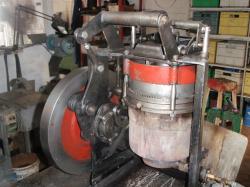
LSM 12.1 open cycle air engine 2010- failure
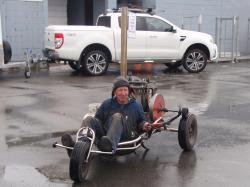
LSM 12.2 in the world's fastest Stirling engine powered kite buggy, 2012
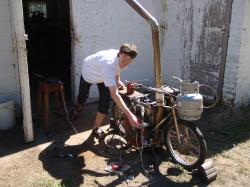
LSM 12.2, Andreas Fischbacher Dyno-ing , 2012
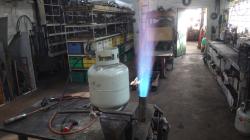
Burner test for LSM 12.3 in mobility scooter 2021
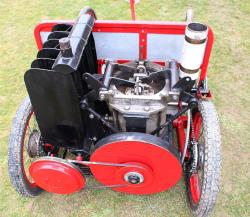
Stirling engine mobility scooter showing convector, 2022
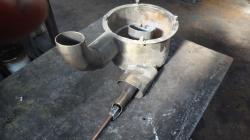
Double venturi heater for LSM 12.3, 2012